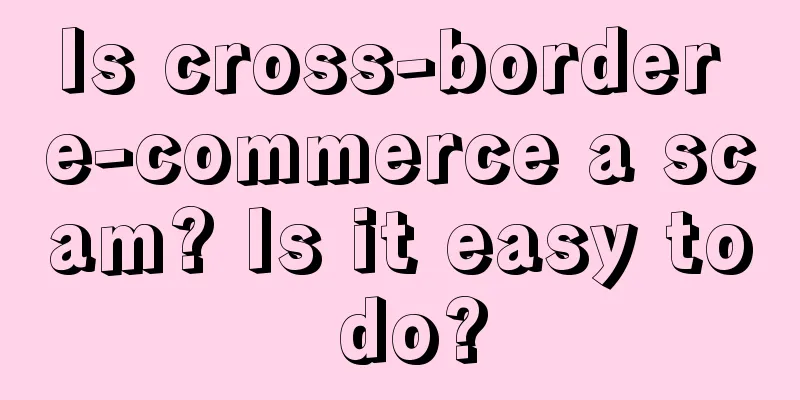Can collaboration save H&M? | Marketing Observation

|
One day in September 2004, celebrities in the Upper East Side of Manhattan, New York, woke up early and lined up at the H&M store on Fifth Avenue, just to buy a T-shirt with the head of Karl Lagerfeld. Some people prepared a strategy at home in advance and arrived at the scene before dawn. The quick ones could grab 20 or 30 pieces in one go. A few days later, the collaboration items appeared on eBay at prices several times higher than the original price, and their owners patiently waited for bidders to bid even more outrageous prices - exactly the same as today's trendy shoe market. This is the first time for H&M, and also the first time that fast fashion has collaborated with a designer brand. It's not that there have been collaborations between mass fashion brands and designer brands before, but the results were mostly quite bleak. For example, Halsten, which was once synonymous with American high-end fashion, was directly removed from the high-end department store Bergdorf Goodman after a collaboration with JC Penney. Therefore, even if H&M hung full-body advertisements of Karl Lagerfeld all over New York City, there were still fans screaming in disbelief under these billboards, "Is it true? Karl! Karl!" The success came unexpectedly. According to WWD, the collaboration was sold in more than 500 stores, and most items were sold out within a few hours, while H&M originally reserved a two-week sales window for the series. Customers who couldn't buy the products complained that H&M didn't have enough stock, and even Karl Lagerfeld himself was dissatisfied with H&M's hunger marketing and announced that he would no longer cooperate with it. Twenty years have passed in the blink of an eye, and the fashion industry is no longer what it once was. The "top-down" aesthetic penetration has become a value transmission between brands, KOLs, and consumers, making it particularly difficult for brands to tell a complete story. Legendary designers such as Tom Ford and John Galliano have gradually retreated behind the scenes, and the so-called European fashion circle's influence on the public's aesthetics has greatly diminished. Fast fashion, which draws nourishment from it, naturally cannot escape the fate of being damaged together. Democratizing fashion After the pandemic, the biannual Paris Fashion Week is once again underway with great fanfare. The streets outside the venue are transformed into fashion shows, with men and women dressed up in fancy clothes, waiting to be the prey of the camera, and the dramas of major brands inside the venue are staged one after another, on the aisles and on social networks. In a few weeks, the fast fashion shelves will be able to find the first to try on the new season series of sister products. A few months later, the street clothing stores will also have new products with popular elements on the shelves, although the imitation is very poor. Thanks to the existence of H&M, ordinary people can buy items that can only be worn by models and rich girls at one-tenth or even one-twentieth of the price. "Fashion democratization" is also one of the many compliments that have been used to praise H&M's joint series. Over the past 20 years, the Swedish fashion giant has seen its performance soar like a rocket amidst the wave of collaborations, even though H&M has never officially disclosed any sales data. But they have figured out the secrets to making certain collaborations sell better - practical rather than experimental items sell better, and gorgeous styles sell better than simple styles. H&M Group’s global revenue, 2006-2023 Good cooperation benefits both parties. In addition to the attractive price tag (rumored that Karl Lagerfeld and Stella McCartney's remuneration is as high as $1 million), for young designers, working with H&M is a rare opportunity to prove themselves - to prove that their works are really in line with the public aesthetic and not just for their own enjoyment. Olivier Rousteing, who was only 30 years old at the time and was in charge of Balmain, once publicly stated that the cooperation with H&M was one of the highlights of his career. "The love of consumers was a great encouragement to me, and the critics were quite lenient with me at the time." Therefore, even if Karl Lagerfeld is determined to cut ties with H&M, it does not prevent countless celebrity designers from following suit and hopping on the express train of cooperation with H&M: Maison Martin Margiela, Comme des Garçons, Stella McCartney, Vera Wang... All the big brands you can think of have been labeled with H&M, and are piled up in H&M stores on the streets and alleys at 1/10 of the original price, or even less. Today, H&M has collaborated with designers twice a year to release new collections almost every month. The frequency and quantity of collaborations have increased, and the styles have also begun to be almost intact copies of the designers' previous seasons. "When so-called haute couture pieces can be bought at one-tenth or even one-twentieth of the price, with the only difference being a slightly discounted material, I think designers should be wary of working with H&M," Shawn Grain Carter, associate professor of fashion business management at the Fashion Institute of Technology in New York, told The New York Times. "What they should be wary of is the dilution of their own brand value." If this statement is true, can the value sacrificed by the designer be transferred to H&M? This month, H&M and Korean designer Rokh Hwang's joint series was officially launched. According to the H&M official website, this is a series of works that "rethink and subvert classic professional wear." Most items are black and khaki in color, and the visual style is low-key enough, but the double-layer design of the coat, the detachable collar of the dress, and the accordion-shaped briefcase are full of ingenuity. H&M X Rokh HuangH&M praised this series of works as "full of interactive details", "breaking existing conventions and providing new choices", and it is a kind of "quiet radicalism". The designer himself hopes that this series of works can stay in people's wardrobes for a longer time, "even after five years, it will still not be out of date." To some extent, this is what H&M wants to be: fashionable, but not too fashionable, so that it will be quickly forgotten. This is indeed a difficult scale to grasp. H&M's rival in the Asian market, Uniqlo, has come up with the solution of "basic styles". Focusing on shirts, T-shirts, loose khakis, sweaters and jeans, which are unchanging items, and using new materials to create topics. H&M's other rival, Zara, was pleasantly surprised to find that even with significantly reduced discounts, white-collar workers still paid. As a result, only H&M and SHEIN were left on the table. According to Coresight Research, SHEIN is already the world's largest fast fashion brand, with a market share of about 18%, followed by Zara's parent company Inditex, with a market share of 17%, and H&M with 5%. Analysts say that collaboration may be the main way H&M achieves high-end development - using high-frequency and high-volume collaborations to give customers a new image of quality and design. In order to create more scarcity, the group has also accelerated the update of new products in its high-end Studio series, launching limited editions and capsule series with various themes. Finally, these products, which are 10 times or even higher than the daily styles, are densely put on the market with another expectation: to improve H&M's not-so-good profit performance. Over the past decade, H&M's operating profit margin has dropped from 20% in 2010 to 3% in 2022. Last year, H&M raised this indicator to 6.2%. At the earnings conference, CEO Daniel Erver reiterated the annual goal of maintaining a "10% operating profit margin". There is still a gap between ideal and reality. More co-branded products have been quietly removed from the shelves before people have time to react. For example, after the joint sale with Rokh was announced, most of the related posts on Xiaohongshu came from bloggers and fashion vertical accounts, and there were not many tap water posts. After a field visit, 36Kr also found that there was no queue at its Shanghai store on the day of sale. Some netizens were puzzled and said they couldn't understand H&M's counter-season operation of releasing autumn and winter items as the main style at the turn of spring and summer. More analysts believe that in order to compete for the attention of today's young consumers, H&M may need to completely change its business model from product design to product sales. The implication is that the good times of increasing the popularity and expanding the consumer circle by simply relying on joint ventures will never come back. Activist investors even said that they were "disappointed" that the new CEO came from within the group, and that the Swedish company needed more external reform forces. The question is, how much time is left for H&M to make mistakes? |
<<: Bawang Chaji is on the left, Chayan Yuese is on the right
Recommend
Building a brand organization: An article explains the functions and differences between the brand department and the marketing department
Brand and user experience are the foundation of bu...
A video received 13 million likes. Is it a good start for Douyin creators?
What new developments will there be in the new yea...
Entering the 1 billion club in 4 years, Fang Li’s transformation of TikTok
Domestic beauty brand Fangli achieved a sales leap...
Building a business prediction model is a great method
In data analysis and business decision-making, bui...
After studying 50 business cases, we found the 2024 Xiaohongshu e-commerce business tips
As a social and e-commerce platform, Xiaohongshu h...
How to increase Amazon's natural traffic? What are the methods?
In addition to the traffic obtained through promot...
The boss decided to become the top
From Lei Jun's crossover of technology and fas...
Can live streaming “extend life” and bring Tianya back to life?
Do you know Tianya? What do you think of Tianya li...
Behind the popularity of “temple tours”, why do young people love incense?
In the past, shopping malls, amusement parks, and ...
A "super rich second generation" has arrived in the competitive 9.9 coffee market
Ken Yue Coffee joins the 9.9 yuan coffee price war...
What are the compensation rules for Pinduoduo if it does not ship within 6 days? How to file a complaint?
For Pinduoduo merchants, there are many things to ...
Can I appeal to get my Amazon account back if it is linked? What are the consequences?
After the Amazon account is linked, the platform w...
What does Amazon DHL mean? What are the advantages and disadvantages?
In the process of opening a store on Amazon, you w...
The founder of Zhong Xue Gao sells sweet potatoes and "pays back every penny"
Lin Sheng, the founder of Zhong Xue Gao, started l...
How to put Wish on the shelf? Points to note when putting products on the platform
Expanding international markets is one of the goal...









